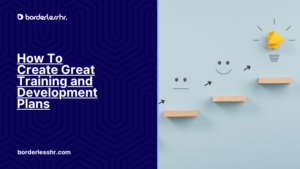Change is inevitable in both personal and professional life. However, managing change effectively is crucial for organizations to adapt, thrive, and stay competitive in today’s dynamic environment. Change management is a structured approach to transitioning individuals, teams, and organizations from their current state to a desired future state. In this blog post, we will delve into the seven essential steps of a highly effective change management process, providing insights and strategies for successful implementation.
The 7 Steps of a Highly Effective Change Management Process
1. Establishing a Clear Vision
The foundation of any successful change initiative lies in establishing a clear and compelling vision. This vision serves as a guiding light, providing direction and purpose to the change effort. Key components of establishing a clear vision include:
Defining Objectives: Clearly articulate the goals and objectives of the change initiative. What do you aim to achieve through this change?
Communicating Vision: Ensure that the vision is effectively communicated to all stakeholders. Transparency and clarity are essential to garner support and alignment.
Creating Buy-In: Engage stakeholders at all levels of the organization to foster buy-in and ownership of the vision. Encourage participation and feedback to instill a sense of ownership and commitment.
2. Stakeholder Analysis and Engagement
Stakeholder analysis is a critical step in understanding the individuals and groups who will be impacted by the change. By identifying stakeholders and assessing their attitudes, concerns, and influence, organizations can tailor their change strategies to address specific needs and mitigate resistance. Key strategies for stakeholder analysis and engagement include:
Identifying Key Stakeholders: Map out the stakeholders who will be affected by the change, including employees, customers, suppliers, and external partners.
Assessing Attitudes and Concerns: Conduct surveys, interviews, or focus groups to gather insights into stakeholders’ attitudes, concerns, and expectations regarding the change.
Engaging Stakeholders Proactively: Develop tailored communication and engagement plans to address the needs and concerns of different stakeholder groups. Encourage open dialogue and provide opportunities for feedback and input.
3. Creating a Comprehensive Change Plan
A well-defined change plan serves as a roadmap for navigating the complexities of the change process. It outlines the specific actions, timelines, and resources required to achieve the desired outcomes. Key elements of a comprehensive change plan include:
Setting Clear Goals and Milestones: Break down the change initiative into manageable goals and milestones. Establish timelines and deadlines to track progress and ensure accountability.
Allocating Resources: Identify the resources, including budget, manpower, and technology, needed to support the change effort. Ensure that resources are allocated effectively to minimize disruptions and delays.
Risk Assessment and Mitigation: Anticipate potential risks and obstacles that may arise during the change process. Develop contingency plans and mitigation strategies to address unforeseen challenges proactively.
4. Communication and Education
Effective communication is essential for keeping stakeholders informed, engaged, and motivated throughout the change process. Communication should be timely, transparent, and tailored to the needs of different audiences. Key strategies for communication and education include:
Developing a Communication Plan: Outline the key messages, channels, and timing for communicating with stakeholders. Ensure that communication is consistent across all levels of the organization.
Training and Development: Provide training and educational resources to equip employees with the skills and knowledge needed to adapt to the change. Offer workshops, seminars, or online courses to support continuous learning and development.
Addressing Resistance: Anticipate resistance to change and develop strategies for addressing concerns and objections. Foster a culture of open dialogue and encourage employees to express their concerns and feedback.
5. Empowering and Engaging Employees
Employees are the driving force behind any successful change initiative. Empowering and engaging employees fosters ownership, accountability, and commitment to the change effort. Key strategies for empowering and engaging employees include:
Encouraging Participation: Involve employees in decision-making processes and give them a voice in shaping the change initiative. Solicit feedback, ideas, and suggestions to foster a sense of ownership and commitment.
Providing Support and Resources: Offer support services, resources, and tools to help employees navigate the change process. Provide coaching, mentoring, or counseling to address individual needs and concerns.
Celebrating Successes: Recognize and celebrate milestones and achievements along the way. Acknowledge the efforts and contributions of employees to reinforce positive behaviors and outcomes.
6. Monitoring and Evaluation
Continuous monitoring and evaluation are essential for assessing progress, identifying gaps, and making necessary adjustments to the change strategy. Key components of monitoring and evaluation include:
Tracking Key Performance Indicators (KPIs): Define and track KPIs to measure the effectiveness and impact of the change initiative. Monitor progress against established goals and benchmarks.
Gathering Feedback: Solicit feedback from stakeholders at various stages of the change process. Use surveys, focus groups, or feedback sessions to gather insights into what is working well and areas for improvement.
Making Adjustments: Be flexible and responsive to changing circumstances and feedback. Adjust the change strategy as needed to address emerging challenges or capitalize on opportunities.
7. Sustaining Change and Building a Culture of Continuous Improvement
Sustaining change requires embedding new behaviors, processes, and attitudes into the organizational culture. It involves reinforcing positive outcomes, addressing resistance, and fostering a culture of continuous improvement. Key strategies for sustaining change include:
Embedding Change into Culture: Integrate the desired changes into organizational policies, practices, and norms. Align incentives, rewards, and recognition systems to reinforce desired behaviors.
Building Change Capability: Invest in building change management capabilities across the organization. Provide training, coaching, and mentorship to develop change leaders and champions.
Encouraging Innovation and Adaptability: Foster a culture of innovation, experimentation, and adaptability. Encourage employees to challenge the status quo, take calculated risks, and embrace change as a catalyst for growth and innovation.
Conclusion
Change is a constant in today’s fast-paced business environment. By following the seven steps outlined in this blog post, organizations can navigate change effectively, minimize resistance, and achieve sustainable results. From establishing a clear vision to building a culture of continuous improvement, mastering the change management process is key to driving organizational success in an ever-evolving world.







